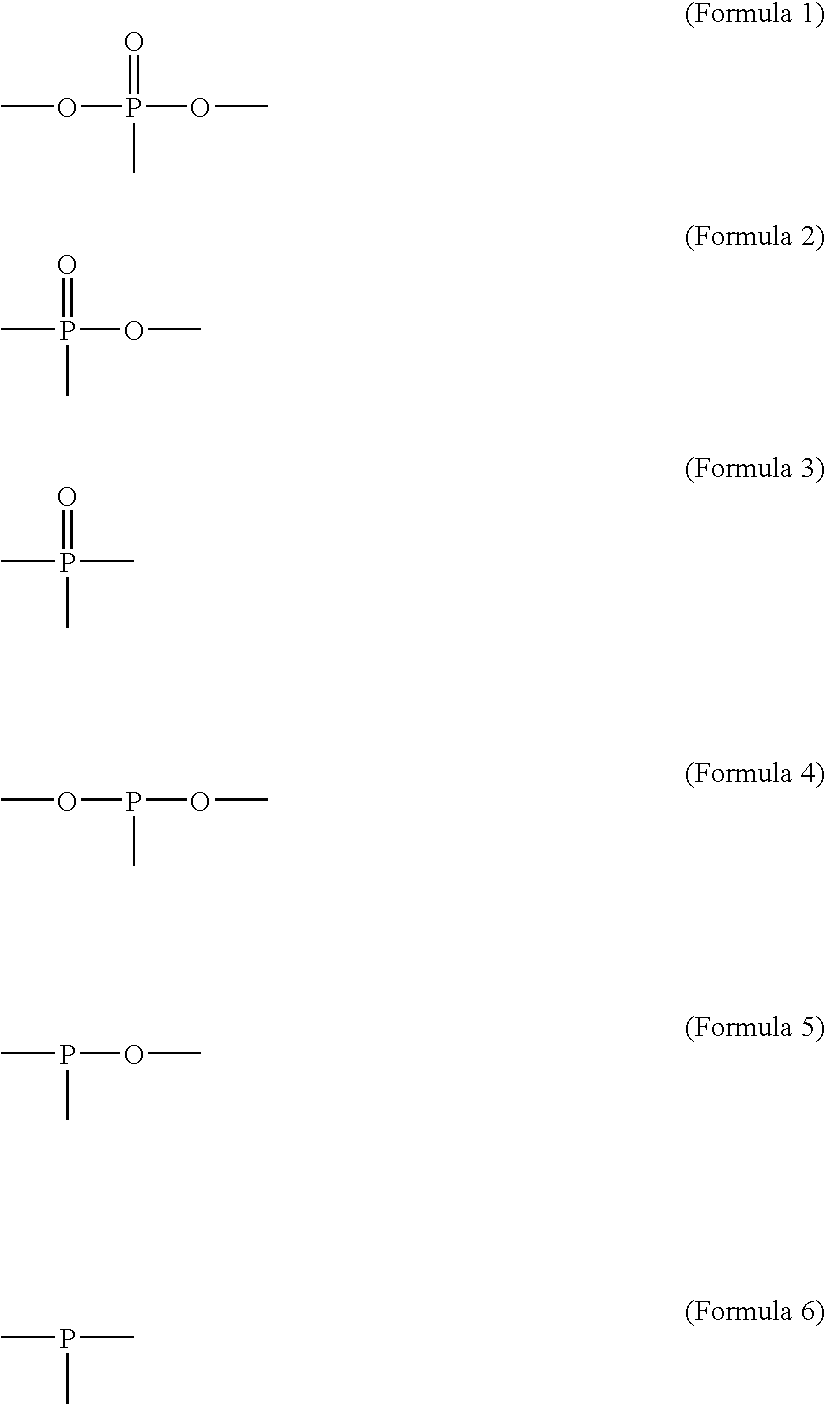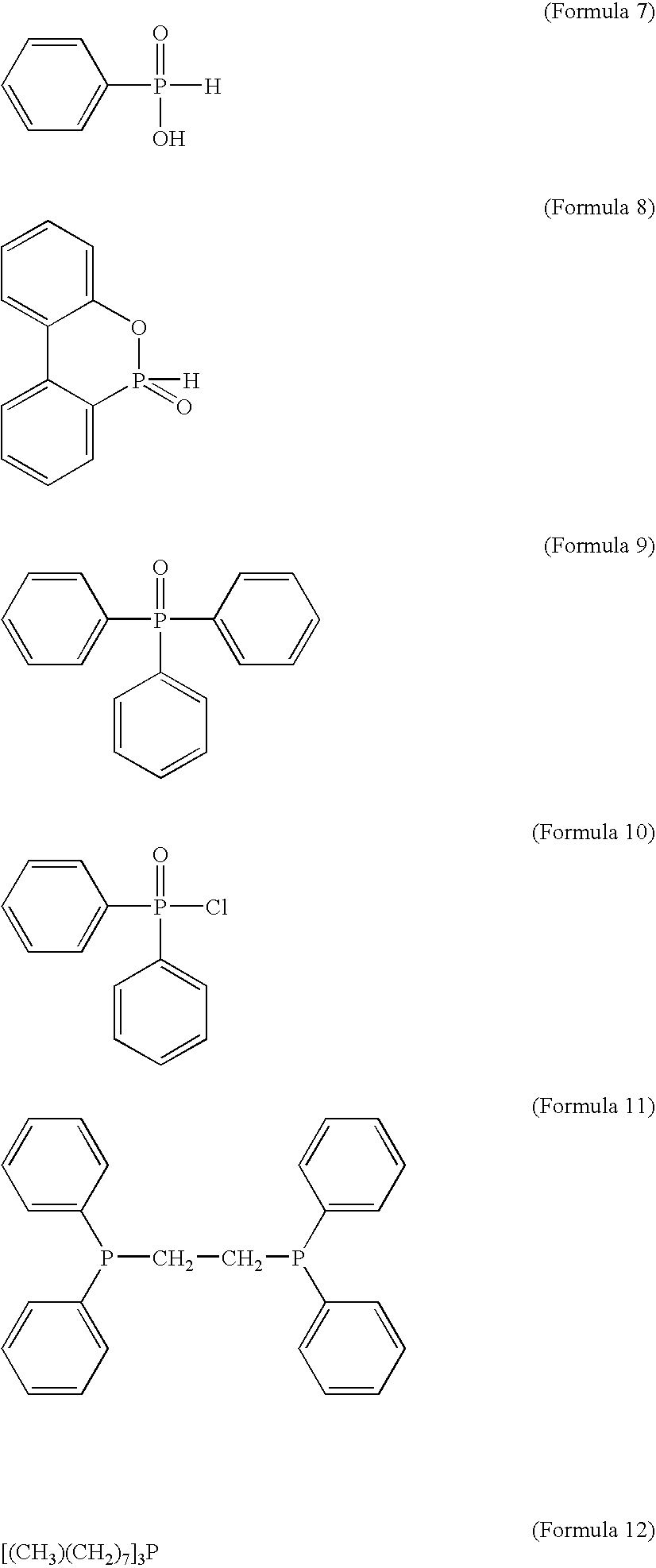Process for producing polyester, polyester produced using said process, and polyester molded product
a technology of polyester and molded products, which is applied in the direction of catalyst activation/preparation, synthetic resin layered products, packaging, etc., can solve the problems of difficult to obtain hollow molded articles excellent in transparency, difficult to achieve hollow molded articles, and difficult to achieve excellent polymerization control. , to achieve the effect of high polycondensation rate, high transparency and color ton
- Summary
- Abstract
- Description
- Claims
- Application Information
AI Technical Summary
Benefits of technology
Problems solved by technology
Method used
Image
Examples
example 1
(1) Preparation of Polycondensation Catalyst Solution
(Preparation of Ethylene Glycol Solution of Phosphorus Compound)
[0277]After 2.0 L of ethylene glycol was added to a flask equipped with nitrogen introduction tube and refluxing tube at room temperature and atmospheric pressure, 200 g of Irganox 1222 (manufactured by Ciba Specialty Chemicals K.K.) as a phosphorus compound defined by the formula (Formula 39) was added while being stirred at 200 rpm in nitrogen atmosphere. Further, after 2.0 L of ethylene glycol was additionally added, setting of the jacket temperature was changed to be 196° C. for heating and after a moment the inner temperature reached 185° C. or higher, the mixture was stirred under refluxing for 60 minutes. After the heating was stopped, the solution was immediately parted from the heat source and while the nitrogen atmosphere was kept as it was, the obtained solution was cooled to 120° C. or lower in 30 minutes. The mole ratio of Irganox 1222 in the obtained sol...
example 2
[0283]An aqueous solution of refined basic aluminum acetate free from water-insoluble substance was obtained by subjecting an aqueous solution of the aluminum compound prepared in Comparative Example 1 to ultra high speed centrifugation at 500000×g for 1.5 hours. A portion of the obtained refined solution was sampled and dried by a freeze drying method to obtain refined basic aluminum acetate. The absorbance of the refined basic aluminum acetate evaluated by the above-mentioned evaluation method was 0.0022. PET of Example 2 was obtained in the same manner as Example 1, except that the above-mentioned refined basic aluminum acetate was employed as an aqueous solution of the aluminum compound. The properties of the obtained PET are shown in Table 1.
example 3
Preparation of Ethylene Glycol Solution of Aluminum Lactate
[0284]An aqueous solution containing about 67 g / L of aluminum lactate was prepared at room temperature. The obtained aqueous aluminum lactate solution was diluted with pure water and the absorbance evaluated by the above-mentioned evaluation method was 0.0177. An aqueous solution of refined aluminum lactate free from water-insoluble substance was obtained by subjecting the above-mentioned aqueous solution to ultra high speed centrifugation at 500000×g for 1.5 hours. A portion of the obtained refined solution was sampled and dried by a freeze drying method to obtain a refined aluminum lactate. The absorbance of the refined aluminum lactate evaluated by the above-mentioned evaluation method was 0.0017. After that, the refined aqueous aluminum lactate solution was mixed with ethylene glycol and heated at about 100° C. to remove water and obtain an ethylene glycol solution containing about 29 g / L aluminum lactate.
(Polycondensati...
PUM
| Property | Measurement | Unit |
|---|---|---|
| concentration | aaaaa | aaaaa |
| temperature | aaaaa | aaaaa |
| length | aaaaa | aaaaa |
Abstract
Description
Claims
Application Information
 Login to View More
Login to View More - R&D
- Intellectual Property
- Life Sciences
- Materials
- Tech Scout
- Unparalleled Data Quality
- Higher Quality Content
- 60% Fewer Hallucinations
Browse by: Latest US Patents, China's latest patents, Technical Efficacy Thesaurus, Application Domain, Technology Topic, Popular Technical Reports.
© 2025 PatSnap. All rights reserved.Legal|Privacy policy|Modern Slavery Act Transparency Statement|Sitemap|About US| Contact US: help@patsnap.com



